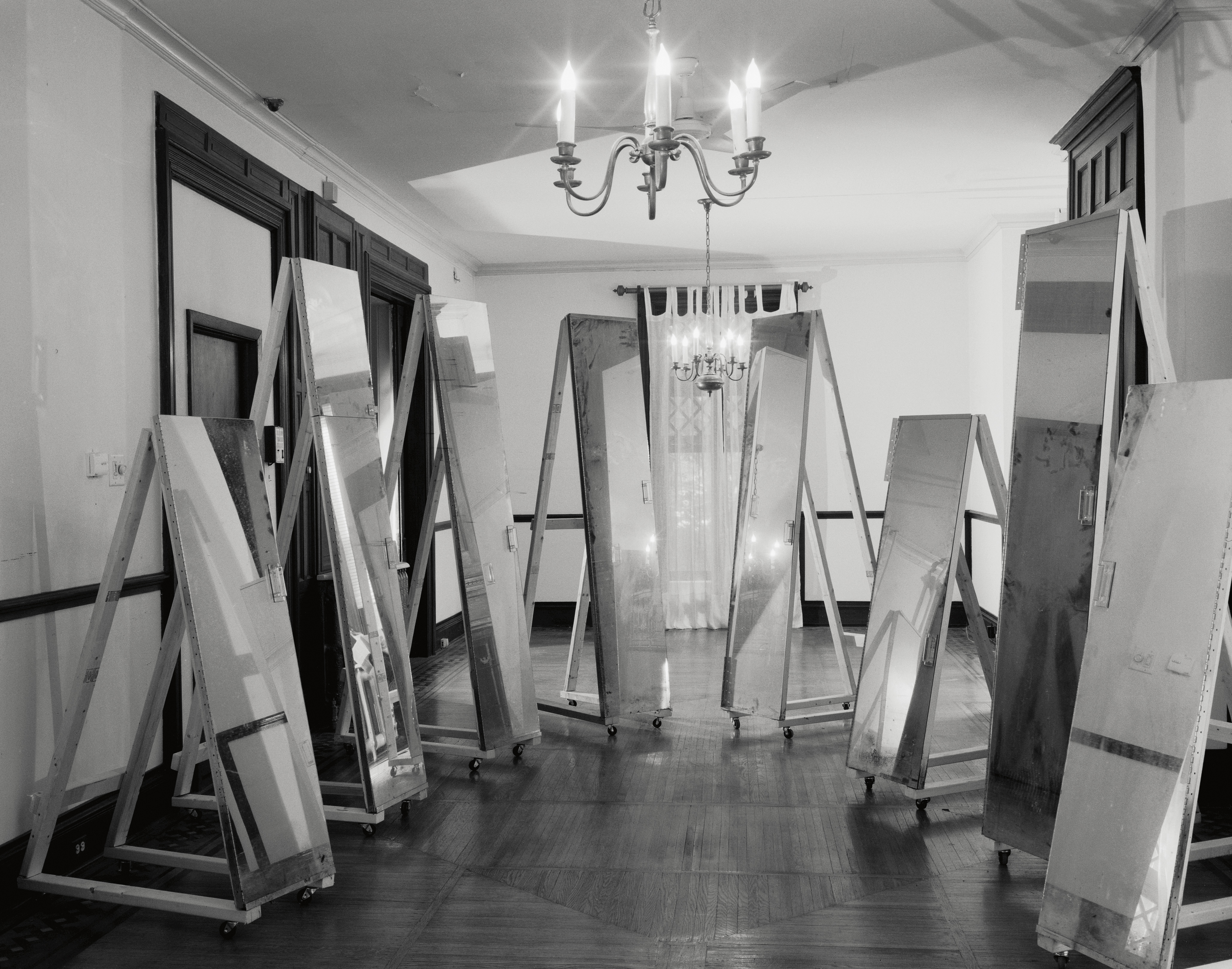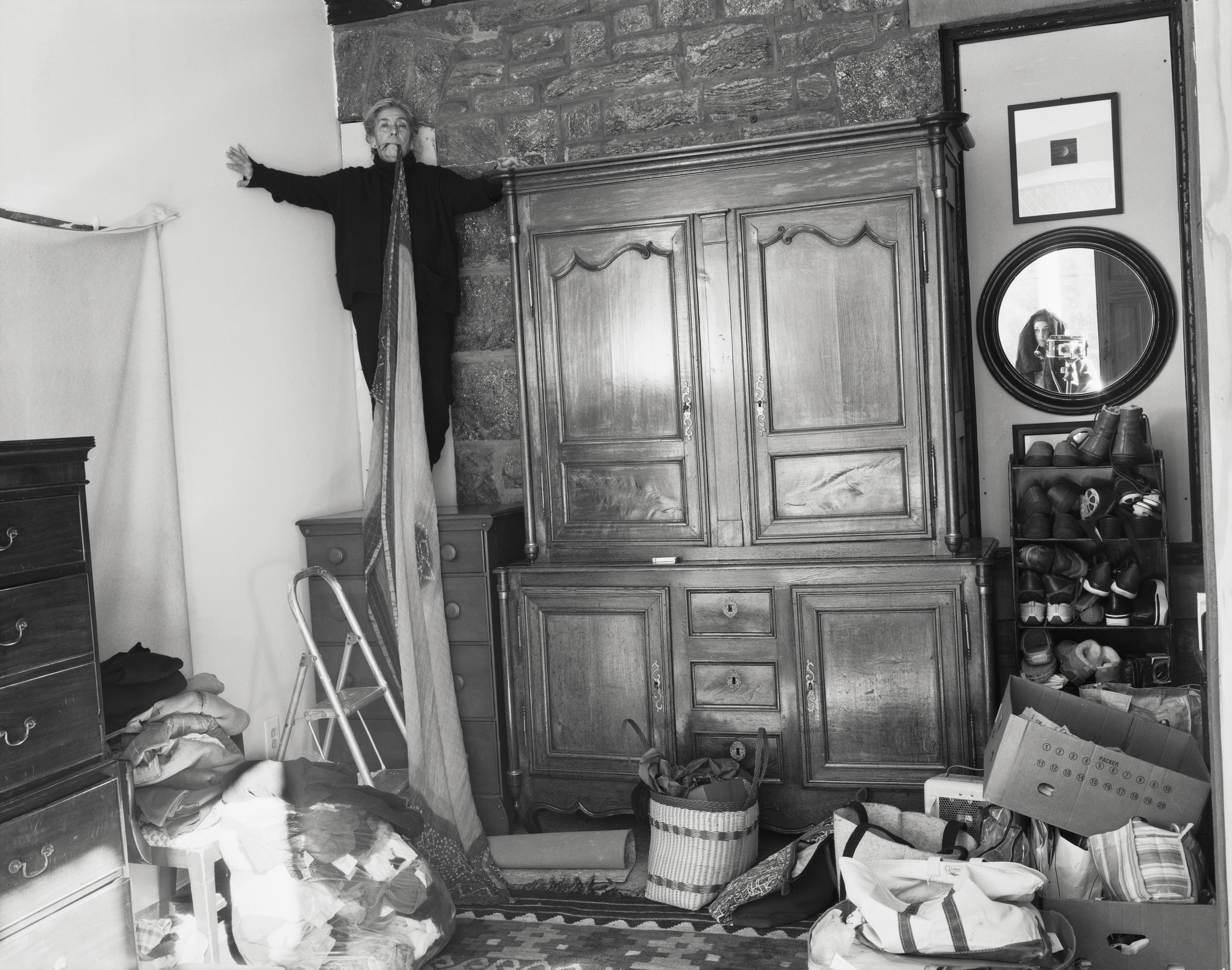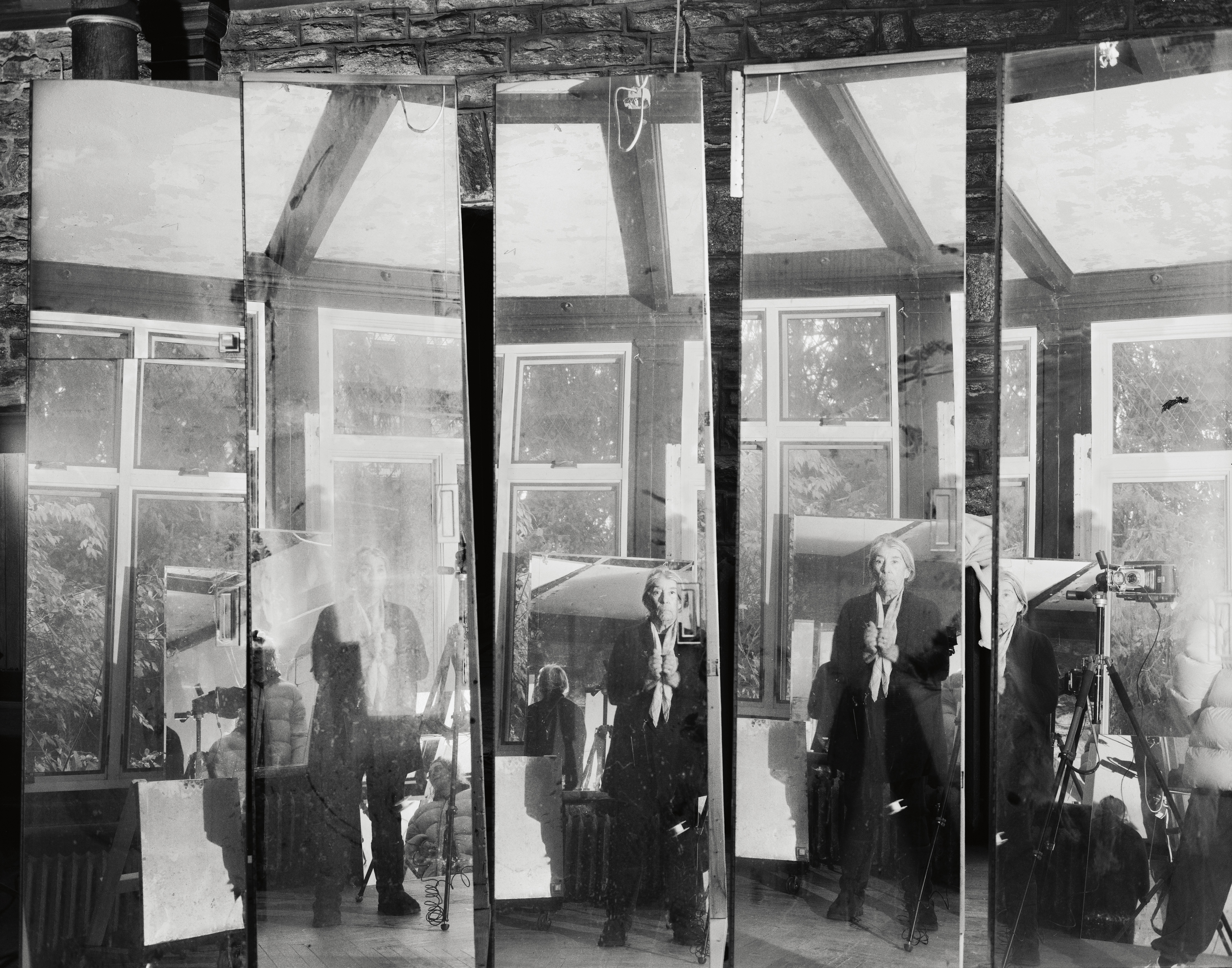Katherine Hubbard by no means supposed to make work about her household. Recognized for her conceptual, typically cameraless photographic observe and durational performances, she saved the private at a take away. However when her mom was identified with LATE, a mind situation mimicking the signs of Alzheimer’s, and caregiving turned a part of each day life, the boundary between artwork and necessity started to dissolve.
The Nice Room – an elegiac, formally exact physique of labor remodeled a number of years within the decaying Philadelphia mansion her mom refused to depart – is much less a documentary of sickness than a meditation on time, structure, and the quiet choreography of care.
‘The mission began out of necessity,’ Hubbard explains. ‘When my mum began to get sick there wasn’t time to maintain making work and take care of her except the 2 turned one.’ The logistical constraints had been intense: Hubbard was shuttling between her residence in New York, Carnegie Mellon in Pittsburgh, the place she runs the MFA programme, and her household’s home in Germantown, Philadelphia. Her mom’s cognitive decline was evident lengthy earlier than any formal prognosis, however the healthcare system’s sluggish tempo – exacerbated by the onset of COVID – and the monetary prices of outsourcing assist, meant caregiving fell totally on Hubbard and, ultimately, her brother.
(Picture credit score: Katherine Hubbard, ‘The Nice Room’)
Set within the cavernous, crumbling residence her mom inhabited for many years – an area bursting with architectural salvage and a long time of unanswered correspondence – The Nice Room is a quiet, immersive work that resists simple categorisation: half documentary, half efficiency, half sculpture. Born out of a protracted gestation interval, partly owing to Hubbard’s desire for large-format movie, the mission took form over the course of a number of years.
‘I principally introduced all of my digital camera tools, set every thing up and simply left it there,” says Hubbard. Dwelling with the digital camera, ‘as a 3rd wheel that cohabited with us,’ meant that it turned simply one other piece of furnishings in the home. ‘We by no means checked out any of the images,’ she says, ‘I simply focussed on what it felt wish to be with my mum on this place – if I cared about how issues appeared it might all dissolve.’

(Picture credit score: Katherine Hubbard, ‘The Nice Room’)
The photographs are staged however not theatrical, composed however by no means for the digital camera. Hubbard’s method to efficiency is formed by intimacy and the calls for of sickness. ‘Generally I might construct life across the picture. Generally the picture needed to match into life.’ The home is perhaps in chaos – spoiled meals, exploded eggs on the ceiling, tenant complaints, a mountain of unopened mail – however inside that, moments of stillness emerged. ‘As soon as we entered that area collectively, we had enjoyable,’ she recollects. ‘We might do issues that we couldn’t do whereas we had been simply getting by way of the day.’
Within the pictures, Hubbard is commonly current – her physique, her reflection, her limbs – a refined refusal of the photographer’s conventional invisibility. ‘I actually wished to be current within the pictures, however I additionally wished to create considerably of a fiction of my mum because the photographer, as a result of I used to be actually within the methods I might give her authority within the pictures – so she held the shutter, she triggered the picture.’

(Picture credit score: Katherine Hubbard, ‘The Nice Room’)
There’s a radical softness at work right here. In a single {photograph}, the 2 bathe collectively, their limbs intersecting, barely distinguishable. “Bathing was someplace I might actually present the depths of our consolation with one another with out asking her to easily stand bare and reveal herself,’ explains Hubbard. ‘By together with my very own physique within the body, I might defend that area.’
Vintage mirrors, a part of the intensive salvaged flotsam that her mom accrued over a lifetime, allowed Hubbard to insert herself into the photographs whereas additionally serving as a threshold, between previous and current, between seeing and being seen. ‘We very deliberately did not clear them,’ explains Hubbard. ‘So they don’t seem to be reflective, pristine surfaces, they dissolve the physique and morph it. However once you transfer them, your fingers take the filth off, in order that they turned these dwelling props.’
As the home emptied in preparation for its sale, these gleaming, anachronistic mirrors served as sculptural anchors within the empty rooms, creating portals, echoes, layered strains of sight. ‘I didn’t need vacancy to symbolise loss of life,’ she says. ‘I wished to create an area of transition, of continuation.’ With The Nice Room, Hubbard achieves one thing uncommon: a photographic work that resists spectacle and sentimentality in favour of one thing deeper – cohabitation, care, and the hard-earned aesthetics of interdependence.
loosejoints.biz

(Picture credit score: Katherine Hubbard, ‘The Nice Room’)

(Picture credit score: Katherine Hubbard, ‘The Nice Room’)

(Picture credit score: Katherine Hubbard, ‘The Nice Room’)

(Picture credit score: Katherine Hubbard, ‘The Nice Room’)
Supply: Wallpaper

